My quest to become the next Constance Spry
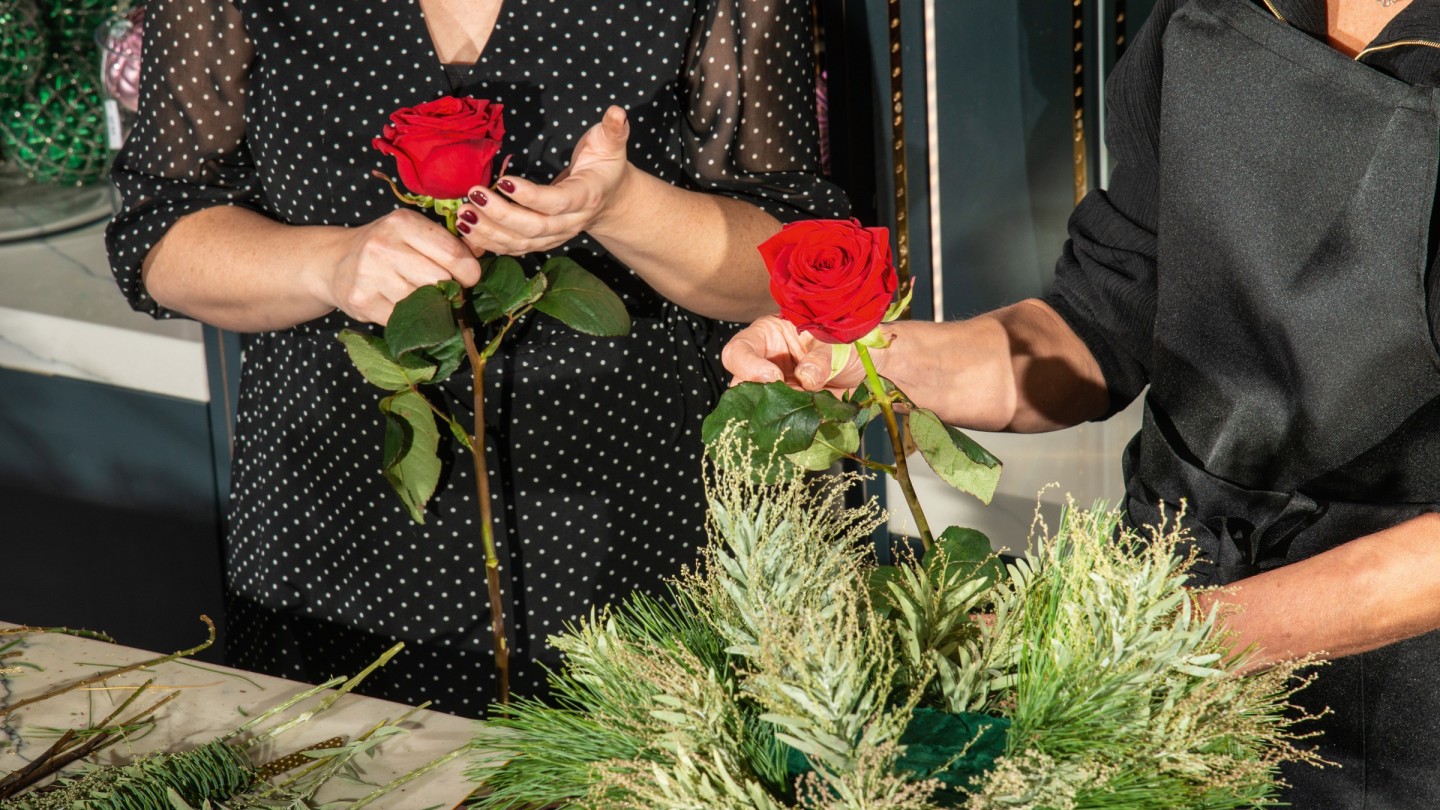
Simply sign up to the Style myFT Digest -- delivered directly to your inbox.
“I am sorry, Naomi,” I say to a 80cm-tall red rose that I have decapitated while inserting the stem into a block of biodegradable florist’s foam.
“Don’t worry, there are plenty more,” says Katy Coleman, the empathetic manager at Neill Strain florists in Belgravia, who is delivering a step-by-step masterclass. It’s the start of a floral odyssey that will introduce different mindsets, a variety of techniques and aesthetic schools that span dense Dutch Master-inspired designs, minimalist Ikebana compositions and naturalistic arrangements pioneered by the inimitable Constance Spry.
My own experience of floristry – something I love to dabble in – was encouraged by my grandmother, who worked with flowers and branches from the garden, including spectacular cherry-tree blossoms at Easter and fir mixed with gold-sprayed seashells and pinecones at Christmas, to decorate her home on the East Devon coast. My brother and I would always consult the Great Big Messy Book: a lavishly illustrated manual by Elinor Goulding Smith (first published in 1962), dedicated to people all over the world “who drop things”. In one memorable chapter, Goulding Smith gives a hilarious flower-arranging lesson that starts with huckleberry leaves and chrysanthemums and, via a series of over-enthusiastic cuts and haphazard additions (including a bunch of grapes), ends in chaos. The author concludes that a bowl of fruit in the centre of the table might be a better option and resolves to take up floristry “another day”. As I swiftly learn, it is only by mastering of basics that one can indulge in the pleasures of “free form”.
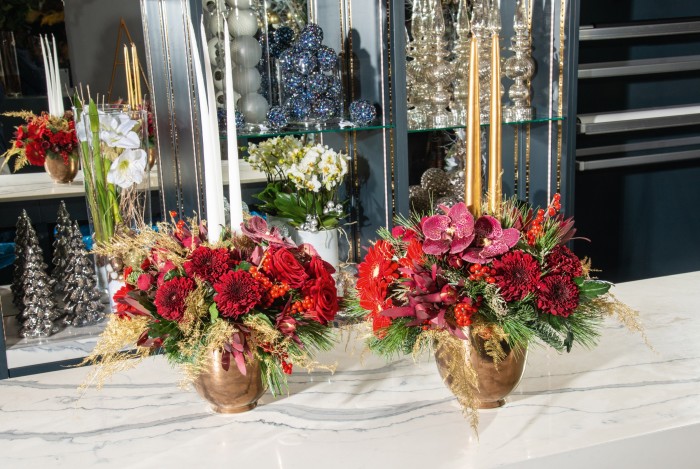
The pandemic and a wider appreciation of nature, plants and gardens seem to have increased the desire to learn. In the capital, the London Flower School and McQueens both stage courses ranging from half-day sessions to fully fledged programmes for trainee florists. Individual artists such as Wagner Kreusch also offer classes for groups of friends in their own homes. There’s a flurry of books to inspire, including Flower Flash by designer Lewis Miller (Monacelli), who creates jubilant installations on New York’s streets, and Flora Magnifica, by Japanese punk artist Makoto Azuma (Thames & Hudson), who has set flowers in ice and sent bouquets into the stratosphere. Mastery might be a long way off, but the flow state induced by floristry is profoundly rewarding, albeit with a few decapitations en route.
Neill Strain
Working from his boutique on West Halkin Street, London, which launched in 2008, and from a more recent concession at Harrods, Strain is famed for his opulent collections and a couture approach that sees the florist and his team decking out Belgravia townhouses with bespoke installations. Strain, who grew up in rural Northern Ireland, was an avid gardener from a young age and started working part-time at a local florist’s shop when he was 14. He studied set design before training in floristry in the UK and in Holland, where he learnt from the European school that favours innovative frame works and architectural displays.
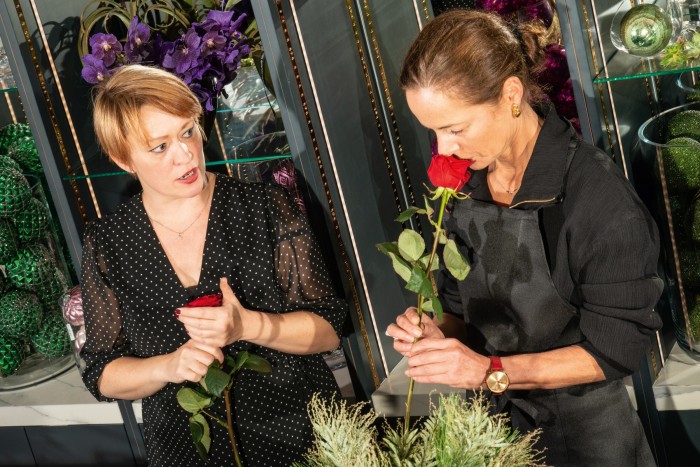
My task is to create a red-and-green table arrangement from Strain’s festive Red Rejoice collection inspired by Victoriana. The lesson starts with shaping a multi-textured “collar” of blue spruce, Scotch pine and mimosa foliage, with each piece of greenery neatly trimmed and diagonally cut. “Plants, like humans, have a clotting system that stops liquid evaporating, so if you do not re-cut, the stem cannot take in water,” says Coleman. Next up, groupings of singular flowers – Naomi roses (imported from Porta Nova growers in Holland), scarlet gerberas, carnations and ruby red chrysanthemums – are positioned at quarter intervals around the vase. The clusters create focal points in this densely packed style.
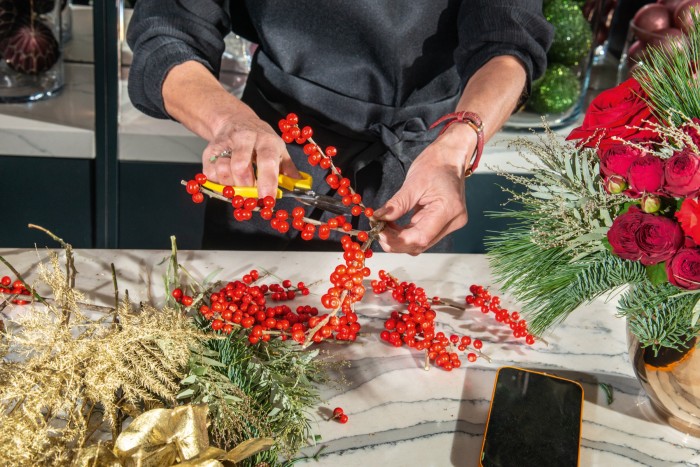
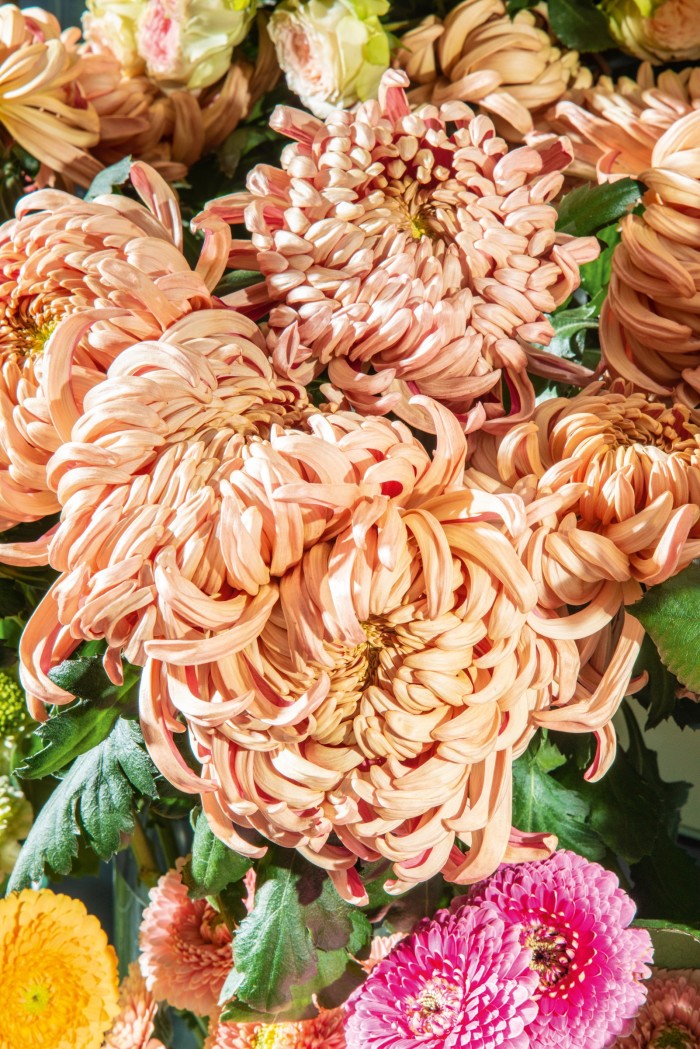
While Coleman’s expert hand achieves a smooth, dome-like curvature, mine begins to resemble the “wild country cousin”, but with angled “filling” using berries, rose sprays and gold-dunked moss fern, the look comes together around the centrally positioned gold tapered candles. The pièce de résistance – three velvety, speckled Vanda orchids (grown by Ansu), each in a tiny test tube – is placed at “prime positions” in the inner circle. It’s staggering to see how many elements are required. “This is a ‘juicy’ composition,” smiles Coleman, who completed her distinguished Level 5 British Masters in floristry in 2020.
“The best-quality flowers have a longevity. Supermarket flowers are compromised as they are grown to 40cm and picked to fit packing crates. By contrast, a 80cm-tall rose has had longer to take in nutrients and will boast a thick stem and head. When I first opened, people had rarely seen flowers of this quality,” says Strain, whose team will even pay house visits to refresh arrangements. “For our clients, flowers are not a luxury but part and parcel of daily life and entertaining,” he adds. When, in 2015, Lady Gaga performed at the Academy Awards wearing a dress by Azzedine Alaïa, she asked Strain to compose Alaïa’s name in red roses. Strain delivered the tribute to the designer’s atelier in the Marais, Paris, in time for the show. Lady Gaga’s extravagance takes “saying it with flowers” to a new level.
WAGNER KREUSCH
The Brazilian son of a successful florist mother, Wagner Kreusch initially ignored the calling and trained in graphic design before moving to London. A chance sighting of a job posting at a florist’s kiosk in Liverpool Street Station shifted his ambitions. With limited English, he learnt the trade, built up a portfolio and was employed by McQueens to work at its outpost at Claridge’s hotel. He became head tutor at McQueens Floristry School (then in the East End) before co-founding the London Flower School. “The idea was to create a school without a genre and to teach all types of floristry, from Ikebana to Constance Spry to Dutch Masters. These styles are expressive of history and culture, and that’s what makes the art form so interesting,” says Kreusch.
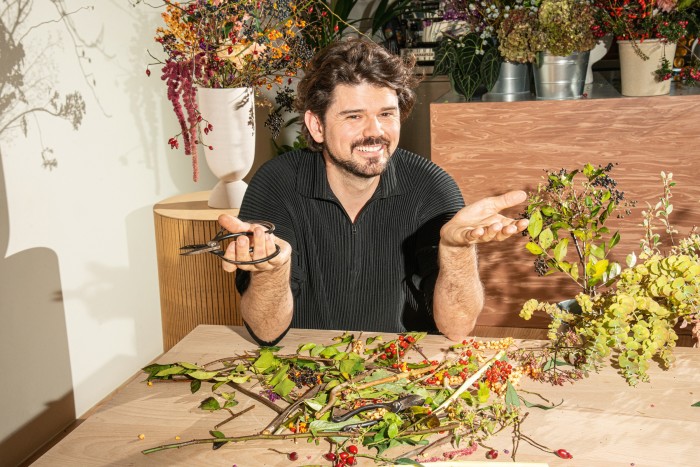
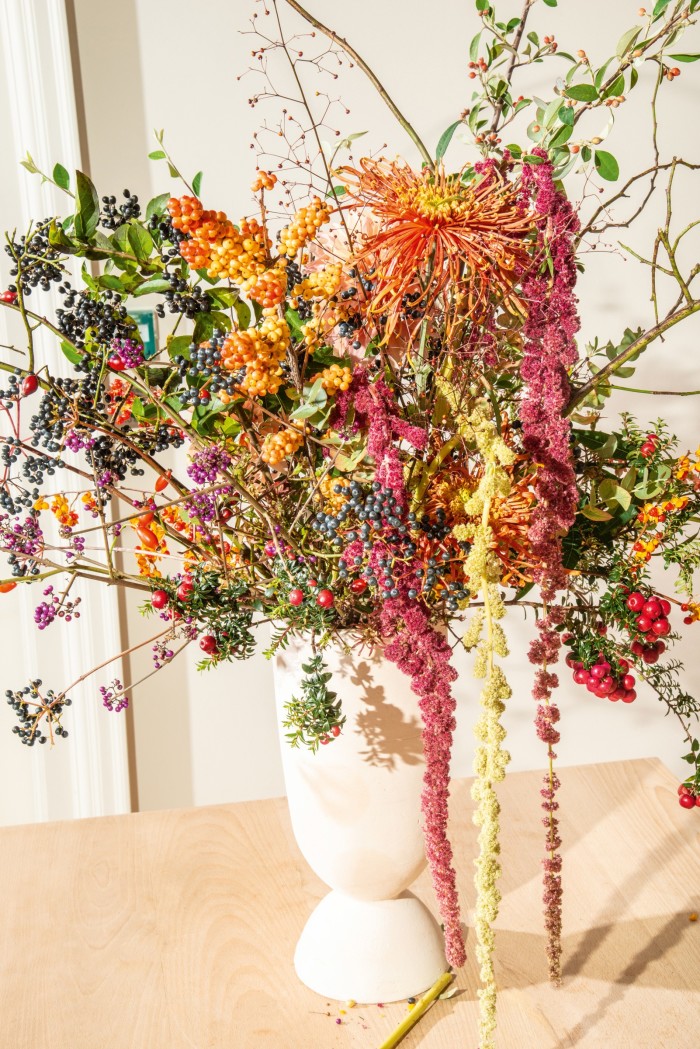
He introduces his designs, including one made with lacerated tropical leaves that combines the minimalist school of Ikebana with a western sense of voluptuousness. Another features tropical leaves and autumnal berries in a slate-grey vase. “I like to create a tension between different environments and species. Whereas Ikebana is about creating space, English floristry is about filling space and is inspired by the garden,” says Kreusch of his skilful fusion.
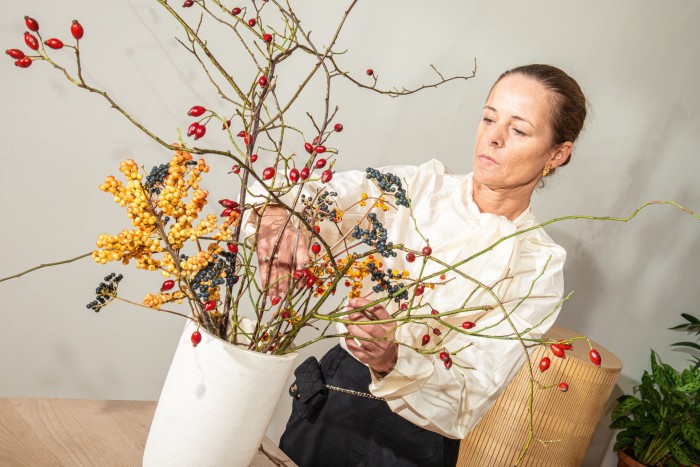
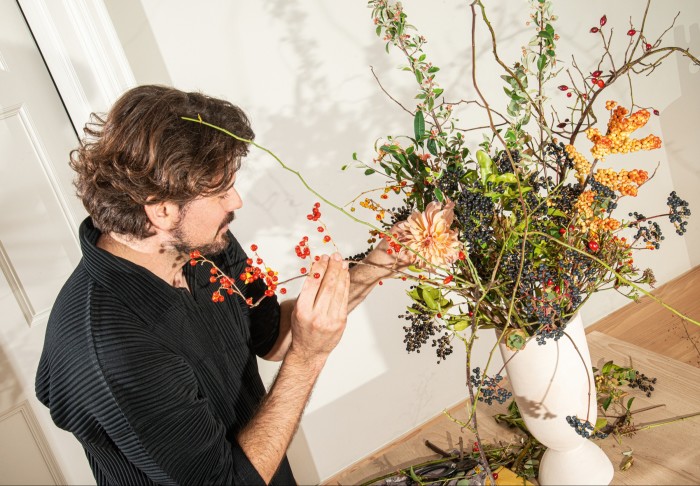
The shape of the vase is the starting point, work beginning with a chamotte clay vessel by Spanish ceramicist Tina Vaia (stocked by MatchesFashion) and a kenzan or “flower frog” placed within it. We start with a silhouette of rosehip branches that reach one and half times the vase’s height and fly outwards. Next up, autumnal berries ranging from clustered golden pyracantha to fuchsia callicarpa and elderberries. “The more character the material has, the better the results. Keep in mind how the arrangement is going to be placed – whether free-standing or against a wall – as that dictates whether it is front-facing or a 360-degree arrangement,” advises Kreusch.
Everything you place in the vase changes the design. The best instruction is to let the elements “play” and not to overthink the result. “Floristry depends on the hands of the florist. It reflects gestures and body language,” says Kreusch, who held a sold-out masterclass at Matches at the Frieze Art Fair, as well as creating its display. During lockdown, he tasked himself with creating a composition a day from foraged canalside finds. “The ritual was a saving grace and allowed me to evolve my own style,” he adds.
Sumptuous blooms – dahlias and ranunculus – are inserted with the sherbet orange and lemon petals half hidden to provide intrigue. The flourishes are offset stems of foamy lilac amaranthus that melt over the rim of the vase. “Every element you place should offer up a ‘final’,” says Kreusch. Indeed, the big lesson in creating this flamboyant style is knowing when to stop.
MARIUSZ CWIK
On a crisp, bright November night, I enter McQueens on North Audley Street, Mayfair: inside is a navy-blue painted workshop where Ikebana master Mariusz Cwik presides. There are beautiful displays on the worktables – one with gloriosa stems and twisted, curling twigs in an asymmetric swirl; another with vibrant berries and sprays of spruce adorned with a coil of metallic Mizuhiki paper.
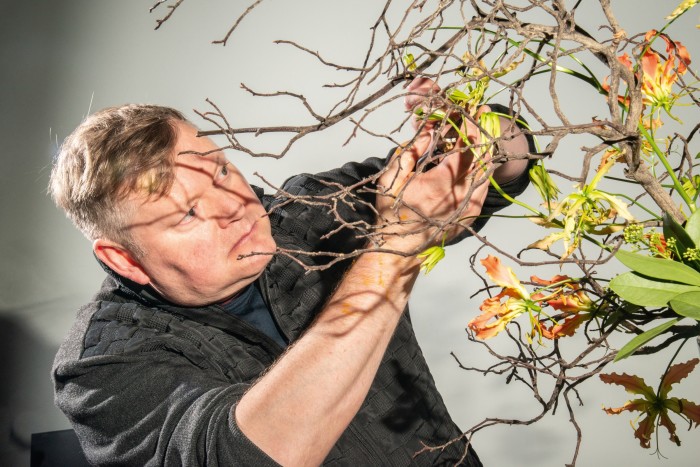
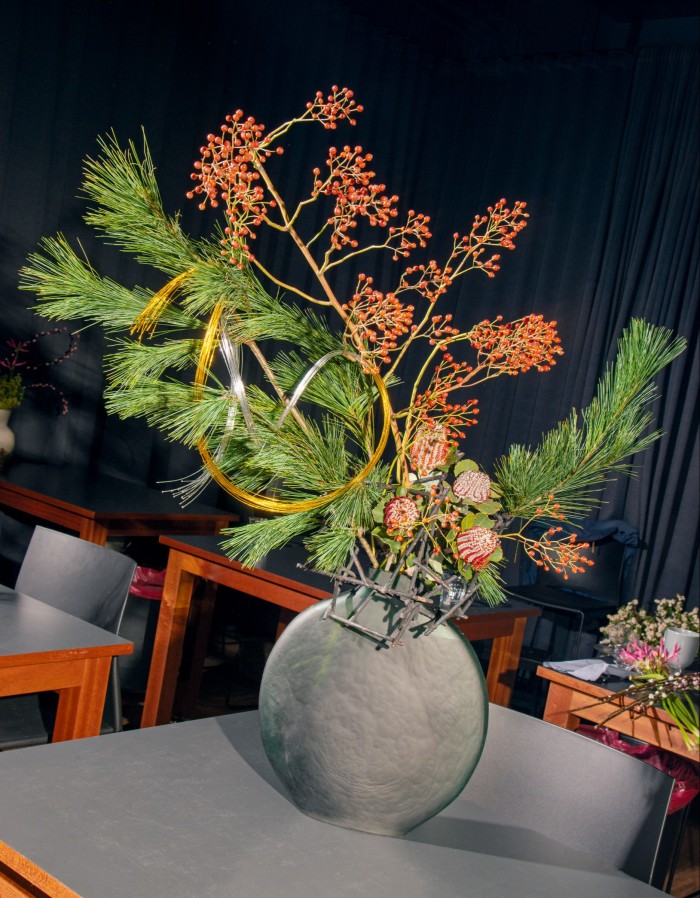
Polish-born Cwik politely informs me that these are advanced. We kick off with the novice-friendly Moribana class that comprises two types of flora placed in a shallow dish. In the centuries-old tradition of Ikebana, a sense of proportion, angle and height is the stuff of deep philosophical study. Cwik talks me through the first three “cuts” that descend by quarters in height from shin (symbolic of heaven) to soe (human) and hikae (earth). The first neatly trimmed stem is positioned at a 15-degree angle and guides the rest of the display, with elements arranged in the kenzan at varying heights and tilts to strict pre-ordained measures. The solid steel cutting scissors do their work with precision while Cwik corrects the course. Two further giant chrysanthemums take their spots, again at different angles and heights (shorter than hikae). This style of arrangement would traditionally have been placed in an alcove in front of a landscape image, or have had a verse of poetry placed asymmetrically to the vase, to create a “conversation”.
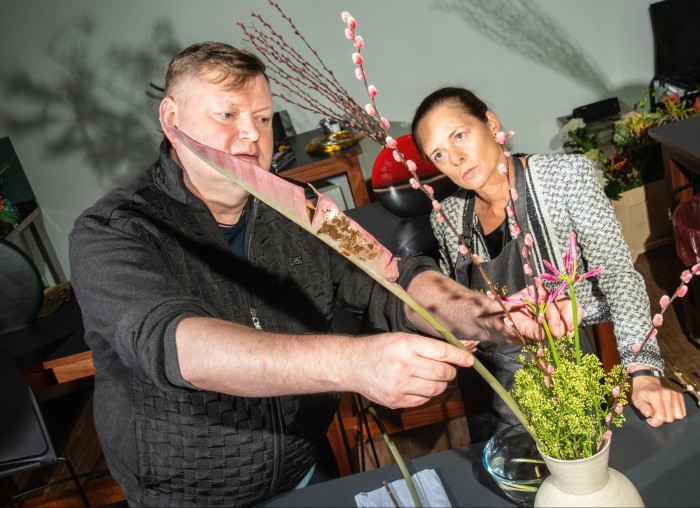
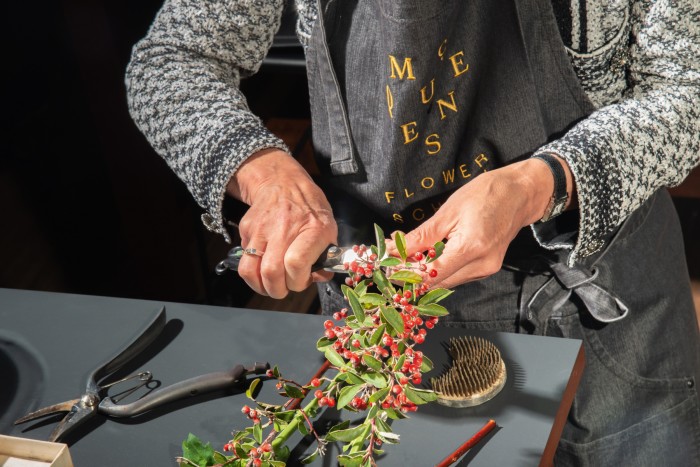
“There are over 1,000 schools of Ikebana, each with its different rules. I studied at the Sogetsu school in Japan from 2013, and it is a more modern style,” says Cwik, who then attended the Sogetsu School of Ikebana in London to become a fully qualified master and teacher. “You learn step by step with the aim of reaching perfection. It’s a lifetime study,” smiles the sensei.
My initiation continues with a more creative arrangement whereby I select three materials from buckets of options. Choice paralysis sets in until Cwik proffers a bird-of-paradise leaf with shimmering gold-leaf patches. I add two twigs of pussy willow and two stems of vivid pink nerine to the base of skimmia flowers. No shape seems to emerge until Cwik gently bends the willow to create a fantastic cyclone around the vase. “Ikebana draws on centuries-old wisdom. There is a principle that whatever you select from nature you have to make more beautiful,” he says. I transport my efforts home in a taxi, allowing this glimmering burst to occupy all the space it desires.
LONDON FLOWER SCHOOL
While in-person tutorials have an intensity and rigour, online courses permit unmonitored experimentation. Opting for a Constance Spry course at the London Flower School, I set off to Columbia Road Flower Market with a list of ingredients for a bridal bouquet (one of three arrangements in the online video course and downloadable workbook). I’m not attending a wedding but want to interpret the bouquet for a friend’s 50th-birthday celebrations that she is hosting in the Chilterns, a series of forest walks, a picnic and a pub dinner.
I nearly fall at the first hurdle: many of the flowers including gloriosa and white nerine are nowhere to be found. Pre-ordering of such delicacies is required. A substitution game ensues with burnt-orange kangaroo paws (anigozanthos) standing in for nerine, fragrant clusters of snowy white chin chin deputising for a delicate double roselily, and wildly curly bamboo for the thin straight stems. I transport the bunches home on my bike in an unwieldy fashion.
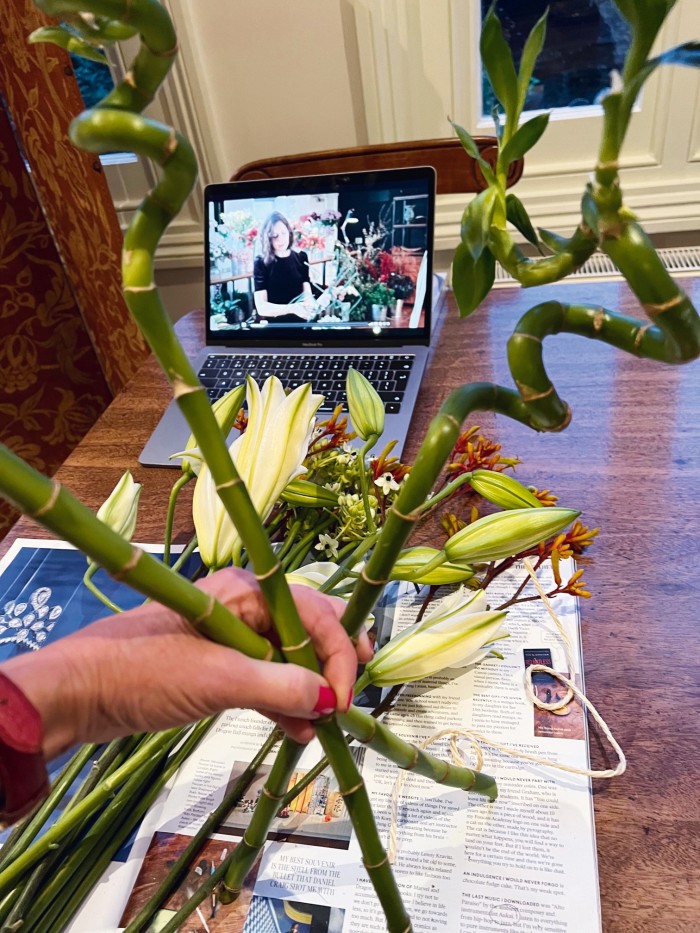
“We use a few ingredients with a strong meaning,” says Federica Carlini, the Italian tutor with a charming, lyrical voice. Explaining every step in detail, she starts by “conditioning” the ingredients and wiring the bamboo stems (a favourite Spry technique) to create angular forms. “Bamboo has healing properties; it is also one of the fastest-growing plants and reduces the carbon in the air,” explains Carlini, who weaves cultural stories throughout the tutorial. “The lily is the symbol of the annunciation, and they are present as a focal point in 16th- and 17th-century Christian art. It is a big protagonist and represents purity.” Clutching the heavy stems of bamboo in one hand, I realise that bouquets are a new challenge in balance and dexterity. “Lilies require a few days to open, so make sure you plan,” says Carlini, who worked at Loewe Flores before joining the London Flower School.
Using kangaroo paws as filler, and chin chin as a “gesture” flower, the bouquet tentatively takes shape. “Every time I see something I don’t like, I trim it directly and manipulate the wires to leave space for the flowers to dance,” says Carlini, who fastens the bunch with tape and flowing ribbons. Mine is verging on the Great Big Messy, and I hope the lilies blossom in time. The bouquet, joyous in the making, might still look lovely in the hands of my friend by candlelight.
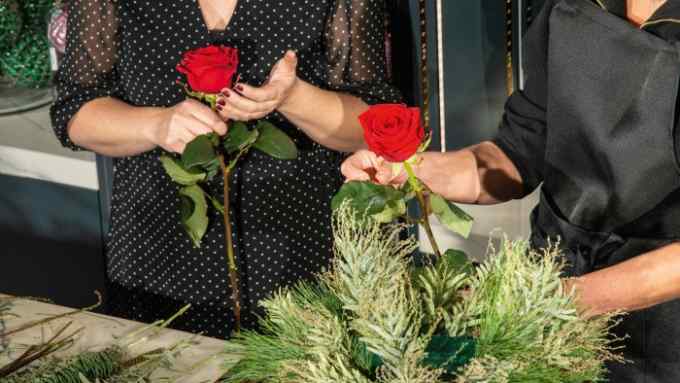
Comments